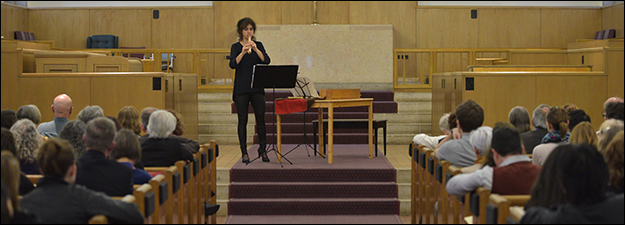Re-Mapping/Re-Reading Pre-Modern Travel Narratives and Maps
Sponsoring Organization(s)
Mediaevalia: An Interdisciplinary Journal of Medieval Studies Worldwide
Organizer Name
Giovanna Montenegro
Organizer Affiliation
Binghamton Univ.
Presider Name
Giovanna Montenegro
Paper Title 1
Translating the Travels: Putting Cristoforo Buondelmonti's Island Book (1420) into English
Presenter 1 Name
Evelyn Edson
Presenter 1 Affiliation
Piedmont Virginia Community College
Paper Title 2
"With the Eyes of the Mind": Fazio degli Uberti's Cartographic Imagination in the Dittamondo
Presenter 2 Name
Toni Veneri
Presenter 2 Affiliation
Univ. of North Carolina-Chapel Hill
Paper Title 3
Hunting the Vision: Animal Spaces in Chaucer's The Book of the Duchess
Presenter 3 Name
Bridget Richardson
Presenter 3 Affiliation
Eastern New Mexico Univ.
Start Date
9-5-2019 10:00 AM
Session Location
Sangren 1730
Description
Great travel narratives of the Middle Ages such as Marco Polo’s Il Milione, Jean Mandeville’s Travels, and the Travels of Ibn Battutah reveal that agents from both Christian Europe and Islamic North Africa experienced the world from a profoundly global perspective. Recently scholars such as Sharon Kinoshita have read Marco Polo within the context of a multilingual Mongol and Central Asian cosmopolitanism, Shirin Khanmohammadi has investigated the way through which Mandeville’s narrative expands ethnographic categories, and Christine Chism has written about how Battutah situates his travels between the worlds of Islam and Christendom. Although the purpose of their travels includes religious pilgrimage and commerce, Marco Polo’s, Mandeville’s, and Battutah’s narratives are rich in ethnographic and geographic description, despite their dubious editorial origins that read as literary pastiche. What is evident is that the cosmopolitan experience of Dar-al-Islam in Battutah, combined with Mandeville’s descriptions of the Holy Land and more fantastical descriptions of the East, along with Marco Polo’s contested and controversial accounts of trade in contact zones, reveal a new way of thinking about geography beyond the confines of the T-O Map, the Mappaemondi, or the Portolan Chart, around which discussions of the cartographic genre in the Middle Ages were centered. Such was the influence of Marco Polo and Mandeville that Martin Behaim included both travel accounts on his globe when he tried to convince King John II of Portugal to partake in voyages of exploration to western Africa and the Indies in the late 15th century.
This panel's papers explore ways through which pre-modern travel narratives can be read geographically; also it seeks ways to read maps that were influenced by literature, i.e. literary cartographies. In what ways are late Medieval and early Renaissance maps shaped by literature? Inversely, how are travel narratives and chronicles shaped by the cartographic tradition that included the itinerarium, as well as Ptolemy in Arabic and Greek? Giovanna Montenegro
Re-Mapping/Re-Reading Pre-Modern Travel Narratives and Maps
Sangren 1730
Great travel narratives of the Middle Ages such as Marco Polo’s Il Milione, Jean Mandeville’s Travels, and the Travels of Ibn Battutah reveal that agents from both Christian Europe and Islamic North Africa experienced the world from a profoundly global perspective. Recently scholars such as Sharon Kinoshita have read Marco Polo within the context of a multilingual Mongol and Central Asian cosmopolitanism, Shirin Khanmohammadi has investigated the way through which Mandeville’s narrative expands ethnographic categories, and Christine Chism has written about how Battutah situates his travels between the worlds of Islam and Christendom. Although the purpose of their travels includes religious pilgrimage and commerce, Marco Polo’s, Mandeville’s, and Battutah’s narratives are rich in ethnographic and geographic description, despite their dubious editorial origins that read as literary pastiche. What is evident is that the cosmopolitan experience of Dar-al-Islam in Battutah, combined with Mandeville’s descriptions of the Holy Land and more fantastical descriptions of the East, along with Marco Polo’s contested and controversial accounts of trade in contact zones, reveal a new way of thinking about geography beyond the confines of the T-O Map, the Mappaemondi, or the Portolan Chart, around which discussions of the cartographic genre in the Middle Ages were centered. Such was the influence of Marco Polo and Mandeville that Martin Behaim included both travel accounts on his globe when he tried to convince King John II of Portugal to partake in voyages of exploration to western Africa and the Indies in the late 15th century.
This panel's papers explore ways through which pre-modern travel narratives can be read geographically; also it seeks ways to read maps that were influenced by literature, i.e. literary cartographies. In what ways are late Medieval and early Renaissance maps shaped by literature? Inversely, how are travel narratives and chronicles shaped by the cartographic tradition that included the itinerarium, as well as Ptolemy in Arabic and Greek? Giovanna Montenegro


